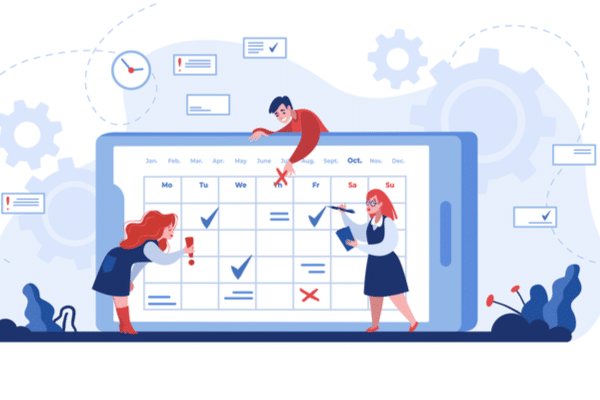If you’re a part of a personal injury firm, you already know the deal—there are a million moving parts for each and every case: from multiple parties to complex statutes to years of medical records and more. Not only do you need to grasp the ins and outs of each your cases, but you also need to make sure that you’re staying ahead of any looming deadlines; after all, even a single missed deadline could lead to a loss goodwill, reputation, profits, or worse, malpractice for your firm.
The problem is that no matter the size of your personal injury practice, task management for personal injury law firms can be a huge issue. For small law firms, you’re wearing so many hats that you’re bound to miss a task here and there. And for larger personal injury law firms, there are so many people involved that it can be tough to coordinate and tasks fly under radar.
So how do you ensure that you stay ahead of the curve? That you’re not always waiting on overdue assignments from your team? That you’re achieving the best results for your clients (and fast)? And that you get more done quickly?
The answer? CloudLex…and that’s the end of the blog.
…Just kidding. But CloudLex is the answer to your missed deadline nightmares. Our next-gen cloud-based personal injury case management system is stuffed full of features, including, but not limited to: case management features, practice management features, intake management features, and the star of this blog, our groundbreaking task management features that can help you organize, assign, and track your tasks while making optimal use of your resources. In other words, running a personal injury firm will never be easy, but our task management features can make it easier.
Ok. Sounds good but how? There are a lot of ways that CloudLex can revolutionize the way you get things done, but you’re a personal injury lawyer and you don’t have all day…after all, you have tasks you need to get done. So, in the interest of time, let’s start with these 4 key practice-saving features:
1. Organize and assign your tasks:
Sometimes half the battle is simply knowing (or remembering) what you have to do—and our task lists serve as your reminders. We provide you with a bunch of categories that correspond to the different stages of litigation (e.g. intake, discovery, trial prep) and each spell out various tasks associated with that stage—for example, for the medical records category, you’ll see tasks like “create HIPAA auths” and “draft motion to compel”. Go ahead and treat it like a menu—pick and choose the tasks you need to get done and assign it to your team. Need to go off menu? You can create custom lists of repetitive tasks with our workflows.
2. Prioritize and track your tasks:
In other words: set it and don’t forget it. With CloudLex, you can prioritize your tasks by assigning them a priority level (high, medium, or low). That way your team knows which projects are most urgent and important. And, just in case they forget, you can set alerts to remind assigned user(s) that task due dates are approaching. On their end, assigned team members can update everyone on their progress by marking a percentage done…so you know when you can expect the project to be done (or not done).
3. Send help for your tasks:
In addition to knowing where your individual projects are headed, CloudLex gives you a birds-eye view of your entire firm’s “map”. See which projects (across cases and team members) are poised to be past due and which are already there—so you can discover where you might able to shift around some resources and give those projects that are a little behind a boost towards the finish line.
4. Reevaluate how you handle your tasks:
They say, “If it ain’t broke, don’t fix it.” But if it is broke, you should definitely fix it. Our detailed reports and dashboard tools give you insight into what you need to fix (and what you don’t) with regard to your task management. You can measure key performance indicators (KPIs) like your completion rate percentage (i.e. tasks completed v. tasks assigned in any period), task age (i.e. how long did it take to complete a task), and more. Then you can use this info to rearrange your task management process and resources so you can stop worrying if your tasks are getting done and start getting your tasks done more efficiently.
And before you go back to your to-do list, let us first take you to task by assigning you one more very high priority project: signing up for a free demo of our next-gen cloud-based platform…it won’t be the last task you have to complete, but it will be the last task that you have to complete inefficiently.
Also Read:
1) How Legal Workflow Automation Tools Can Streamline Repetitive Tasks
2) Why Task Management Is Important for Personal Injury Law Firms
3) Keep Your Dates Straight with a Proper Legal Calendaring System
4) How to Make the Most of Your Day and Up Your Firm’s Efficiency

